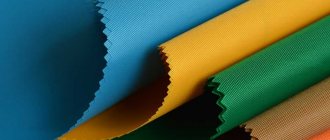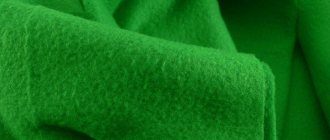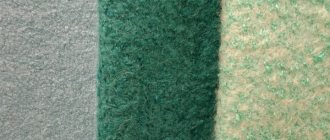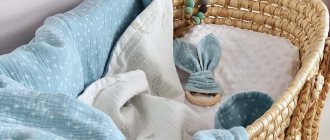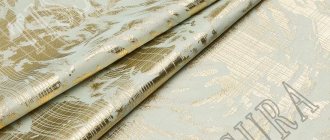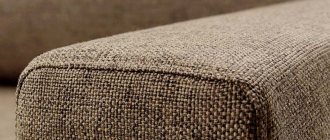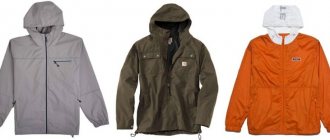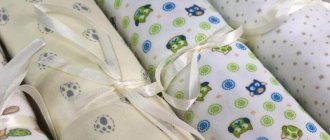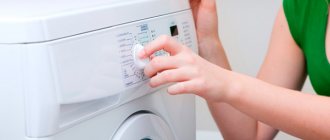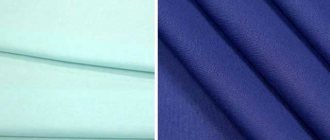The word “brocade” from Persian means “matter”; this is the name given to patterned lush silk, which came to Europe straight from Eastern masters. Brocade is a material woven from silk threads. Brocade is very beautiful, has a rich color. As a rule, it is made of silk and is highly durable. Brocade can be single or multi-colored. Brocade is sewn using special machines. At the same time, both machine and manual work can be used for it. Very beautiful and original products are obtained by hand-making brocade.
- Luxurious brocade, like silk, was first invented in China many centuries ago.
- At that time, heavy fabric was created from natural silk and embroidered only with precious threads made of pure gold.
- Only the imperial family could afford to wear clothes made from this material.
- To this day, brocade is considered a festive fabric for special occasions.
Some scientists believe that Chinese brocade production was actively developing already during the reign of the Han Dynasty, the initial period of which falls on 209 BC. This may well be true, since sericulture in China originated around 1000 BC. To create brocade, a special official was even assigned, who was obliged to monitor the quality of production of artistically integral patterned fabric. Brocade items were an important symbol of aristocrats. Gradually, other commercial aspects of this enterprise were revealed: brocade eventually became an important source of financing for the military. The fabric was actively exported to nearby countries, which also gave impetus to technological development. A special institute for the study of this material was even opened, whose employees contributed to the creation of new varieties of dense silk.
The extraordinary importance of brocade can be judged by two facts:
- Firstly, this fabric was a valuable product, a real luxury on the Great Silk Road.
- Secondly, during the battles of the war, in addition to jewelry, talented brocade makers could also be captured.
When the secrets of creating brocade came from China to Turkey, Persia and Byzantium, the appearance of the fabric changed slightly. The canvas began to be richly decorated with expensive stones or intricate, elegant embroidery. In India, production secrets were transferred to local residents directly from Chinese immigrants. According to legend, it was in exquisite, shiny gold brocade that Buddha was wrapped after his death. In the 16th century, brocade came to Russia, and the production itself began to be practiced only in the 18th century. In our country, such fabrics were used to sew clothes for wealthy nobility or church representatives. The interior of the house was often decorated with brocade; for decorative purposes, gold or silver threads were often replaced by more affordable metal ones.
What type of fabric is this
Brocade is a heavy silk fabric embroidered with metal threads of gold, silver or their alloys with other metals. The metallic thread is woven onto silk, linen or cotton weft - threads that run from one edge to the other parallel to the warp.
Brocade colors
Today the fabric is produced in many countries, but its largest suppliers on the world market are: China, Russia, India, Turkey.
Moreover, Chinese and Indian brocade are the most expensive; they are made by hand and used only to create exclusive items.
Symbols on clothing
A label with recommendations for the care and use of clothing (how to properly clean, wash, dry, iron it (and whether these operations can be carried out) should be on each item. Usually, there is also a tape indicating the fiber ratio (raw material composition, in percent) The table shows typical signs on labels: cleaning, washing, drying, ironing.
| Ironing | |
| You can pet it | |
| Iron at high temperature (up to 200°C)Cotton, linen | |
| Iron at an iron temperature no higher than 140°C | |
| Iron at medium temperature (up to 130°C)Wool, silk, viscose, polyester, polyester | |
| Iron with a slightly heated iron (temperature up to 120°C)Nylon, nylon, viscose, polyacrylic, polyamide, acetate | |
| Do not iron | |
| Do not steam | |
| Drying | |
| Dry at high temperature | |
| Dry on medium heat (normal dry) | |
| Dry at low temperature (gentle drying) | |
| Do not wring or tumble dry | |
| Can be wringed and tumble dried | |
| Dry vertically without spinning | |
| Dry on a horizontal surface | |
| Can be line dried | |
| Can be dried | |
| Neither dry | |
| Dry in the shade | |
| Bleaching and dry cleaning | |
| Dry cleaning with all common solvents | |
| Dry cleaning using hydrocarbon, ethylene chloride, monofluorotrichloromethane (perchlorethylene-based cleaning) | |
| Cleaning using hydrocarbon and trifluorotrichloromethane (freon or white spirit only) | |
| Gentle cleaning using hydrocarbon, ethylene chloride, monofluorotrichloromethane | |
| Gentle cleaning using hydrocarbon and trifluorochloromethane | |
| Dry cleaning | |
| Dry cleaning is prohibited | |
| Be careful when dry cleaning. The product is not resistant to all solvents. Cleaning in white spirit is allowed | |
| Can be bleached | |
| Cannot be bleached. When washing, do not use products containing bleach (chlorine) | |
| You can bleach using chlorine (use only cold water, make sure the powder is completely dissolved) | |
| You can bleach, but only without chlorine | |
| Bleach only without chlorine | |
| Wash | |
| Washable | |
| Washing is prohibited | |
| You cannot use the washing machine | |
| Gentle wash. Precisely maintain the water temperature, do not subject it to strong mechanical processing, when spinning, use a slow centrifuge mode | |
| Carefully adhere to the specified temperature, do not subject it to strong mechanical processing, rinse gradually moving to cold water, when spinning in the washing machine, set the centrifuge to a slow rotation mode | |
| Delicate wash. Large amount of water, minimal mechanical processing, quick rinse. | |
| Hand wash only, not machine washable. Do not rub, do not squeeze. Maximum temperature - 40°ree;C | |
| Washing with boiling water | |
| Washing colored laundry (temperature up to 50°C) | |
| Washing colored laundry (temperature up to 60°C) | |
| Washing clothes in warm water with neutral detergents and washing colored clothes (temperature up to 40°C) | |
| Wash in warm water (temperature up to 30°C) | |
| Do not squeeze, do not twist | |
Origin story
The word “brocade” is literally translated from Persian as “matter”.
Brocade, like all silk fabrics, was invented in China. Back in the 10th century, Chinese craftsmen learned to weave this precious silk fabric. To give it shine, they wove threads of precious metals into silk. Gold brocade was very expensive, so clothes were made from it only for the imperial family.
Over time, the secrets of its production came to India, Turkey and Persia, where brocade began to be additionally decorated with precious stones and skillful embroidery.
In the Middle Ages, brocade began to be woven in Europe: Italy, France, Spain.
This luxurious material appeared in Russia in the 16th century, and royalty and clergy immediately fell in love with it.
Composition and properties of brocade material
Genuine brocade is a patterned, dense fabric made of silk, embroidered with precious threads of gold or silver. But gradually more budget-friendly options appeared, when instead of a precious thread they used a metal fishing line twisted around a thread made of cotton, silk or linen.
In the past, this expensive fabric was produced only by hand, using the highest quality silk raw materials. Already in Europe they learned to make brocade on automated machines. Today, technological solutions and innovations come to the rescue, making it possible to slightly reduce the cost and speed up production. Silk is often replaced by other materials (both natural and synthetic or artificial), but the appearance and quality of the fabric still remain incomparable.
- High price and heavy weight are the main characteristics of brocade, regardless of technology and the choice of particular raw materials.
How it is produced
Authentic classical Chinese brocade has been woven since ancient times using the best silk raw materials, expensive precious threads, stones and even unusually colored feathers of wild birds. Talented specialists took more than ten years to create one dress for the emperor by hand. It was a long, labor-intensive process, but the spectacular final product was worth it. If we turn to a specific type of brocade, for example, Sun brocade, the entire process consisted of more than 20 independent stages from processing raw materials to dyeing the finished fabric. For a very long time, the secrets of making brocade were not revealed; in Byzantium, in general, the dissemination of this information was punished almost in the same way as treason against the state.
Nowadays, of course, technology has changed significantly, but the essence remains the same. The composition of modern brocade is not limited by the conventions of the past. Threads of silk, wool, cotton or viscose are taken as the basis of textiles. To create an ornament, thin threads of base/semi-precious metal, gold or silver are required, which are used to wrap the weft threads. The warp and this combined weft are gradually intertwined along the contour of a pattern of different sizes, which is then woven into the fabric.
Types of fabric
Depending on the composition of brocade, the following types are distinguished:
Silk
Classic brocade, dense but soft, holds its shape well, embroidered with gold or silver threads. The most expensive type of fabric, it can be embroidered or jacquard weave.
Viscose
Soft and durable fabric, does not wrinkle, holds its shape well, the embroidery is made with lurex threads. Therefore, its price is much lower than silk.
Cotton or wool
The base is made of cotton or wool threads and the embroidery is done in lurex.
Lycra or elastane
Elastic threads are woven into viscose, wool or cotton fibers, improving the performance properties of the fabric.
What can you sew from brocade?
Brocade is a material for formal and weekend wear. Evening dresses and suits for ladies are made from it. Brocade dresses, as a rule, are of simple styles, because the material itself attracts quite a lot of attention. A suit consisting of a skirt and jacket looks great. It is better to sew a narrow skirt, and a classic jacket. A skirt with diverging pleats is perfect for young and slender girls. It can be worn with a silk or velvet top.
Brocade pantsuits are less common. Trousers made of viscose brocade look best. They can be worn with plain blouses and turtlenecks. In exceptional cases, it is possible to sew a men's jacket. Brocade goes well with velvet and silk. In this tandem there is only one rule - the satellite material must be matte.
In the interior, brocade can be used for sewing curtains and bedspreads.
Brocade is a beautiful, but complex material that requires special care. Clothes made from expensive types of brocade are worn only in formal settings. Products made from viscose brocade can become part of your everyday wardrobe, but at the same time they require a special selection of looks and accessories.
Advantages and disadvantages
The advantages include:
- high strength and wear resistance due to woven metallized threads;
- spectacular appearance: metallic threads, sparkles, rhinestones, embroidery stand out from many other fabrics;
- drapeability: fits perfectly into folds, creating soft overflows;
- compatibility with other materials: easily combined with almost all fabrics;
- density: brocade products do not require lining;
- pliability: does not require special cutting and sewing skills.
The disadvantages of brocade are:
- high cost: even viscose brocade is a rather expensive fabric;
- limited scope;
- Difficult to maintain: to preserve the decorative effect, it requires skills in handling it;
- if it contains natural metal threads, they quickly become dull and can fray.
How to care for and wash brocade
Since brocade is created by interweaving threads of very different compositions, caring for it requires special care:
- First, we recommend that you read the manufacturer's recommendations.
- It would be equally correct to trust dry cleaning specialists, especially if the cost of brocade is quite high and you do not want to experiment.
- Remember that the metal of the threads in brocade can tarnish when interacting with alkali, so when washing, use only mild, gentle detergents.
- After washing, do not wring out the fabric.
- You can dry brocade clothes horizontally on a dry towel, carefully straightening the fabric.
- Or vertically on hangers.
The main feature of brocade is that it does not wrinkle, so there is no need for ironing. But if such a need arises, you can use a damp cloth to iron the seams on the wrong side of the fabric.
- Machine washing is generally contraindicated for brocade, especially those made from natural threads. Since this fabric is not used for everyday use, it should be washed rarely and only when a real need arises.
- To ensure that brocade clothing does not lose its presentable appearance, it is worth considering several nuances.
- Wash the item by hand in cool water, approximately room temperature.
- Synthetic brocade can be machine washed, but only if the manufacturer allows it.
- Don't forget about the delicate mode and turning off spinning and drying.
Due to various external factors, the fabric wears out quickly, and metal threads may lose their shade. To avoid this, you should avoid active physical impact on the brocade, for example, do not rub the fabric too much during washing. Stains need to be removed carefully, preferably with the help of specialists.
What standards are used in production? What do they take into account?
For the production of brocade, the standards prescribed in GOST 28253-89 Silk and semi-silk dress and dress-costume fabrics are used. General technical conditions (with Amendment No. 1)".
The fabric must match:
- color fastness must comply with GOST 7779;
- in terms of artistic and aesthetic indicators, the fabric must correspond to standard samples approved in accordance with GOST 15.007;
- abrasion resistance - according to GOST 18976;
- crease resistance - according to GOST 19204;
- resistance to crumbling - according to GOST 3814;
- hygroscopicity - according to GOST 3816.
Advantages and disadvantages
Although ancient fabric is produced on modern machines not only from silkworm fibers, wool, cotton, but also from artificial threads, however, just like in the old days, it is highly valued.
The fabric has many advantages, including:
- refined and noble appearance;
- increased strength;
- tendency to drape;
The material does not lose its shape, forms natural folds, and can be combined with different fabrics.
The ornament that is obtained by interweaving metal threads fades, and the brocade loses its attractive appearance. It is difficult to care for patterned fabric; if you do not comply with the care requirements, the product can easily be damaged.
Attention! To eliminate the shortcomings, natural fiber is diluted with synthetics, and metal is replaced with Lurex.
What is the approximate price for selling?
The cost of the fabric depends on the base used, the quantity and quality of metallized threads, the complexity of the pattern, the presence of decor and the manufacturer. The price of 1 meter of brocade starts from 400 rubles and reaches several thousand. The most expensive brocade from Nanjing (China) is available only to a narrow circle of consumers.
Thanks to its splendor and shine, brocade has not lost popularity for several centuries, decorating the classic interiors of expensive houses, theaters, restaurants and hotels. The material is practically not used in everyday life, but is ideal for sewing luxurious evening dresses.
Areas of application of brocade
The main area of application of the fabric is certainly the creation of clothing for special occasions. In the East, traditional robes are made from this fabric, and in India, wedding dresses are made. Bright patterned brocade is ideal for concert or theater costumes, for recreating the image of clothing in a certain historical period. Yes, these products are not weightless at all, but the heavy weight of the fabric and decor itself adds effectiveness and solemnity to the image. However, modern technologies make it possible to achieve dense canvases without weighing down their base. That is why brocade will look quite organically as self-sufficient elegant evening or wedding dresses that require a minimum of accessories and decorations. More affordable options made from synthetic threads are suitable for creating furniture upholstery, bedspreads, tablecloths, curtains and even shoes!
Manufacturers and brands
Brocade is a popular fabric; it is produced in China, India, Korea, Turkey, Iran, many European countries, and Russia.
A Chinese heritage is Nanjing “cloud” brocade with airy patterns on the surface. The material is produced using a manual machine, the levers and pedals of which are simultaneously controlled by 2 experienced craftsmen.
The pride of India is the exclusive gold-woven Yamdani brocade, made to order from natural silk. The patterns of the fabric are woven by hand and are not repeated.
Subtleties of care
Patterned fabric has a complex structure and requires special attention. Contaminated items made from silk or wool brocade are recommended to be dry cleaned. Items made of artificial and cotton fabric are washed by hand with a soft gel that does not contain bleach. After rinsing, gently wring out the clothes. It is recommended to vacuum curtains, sofas, and armchairs upholstered in brocade fabric.
Heavy material takes a long time to dry; to speed up drying, the product is laid out on the surface and carefully straightened. Brocade does not wrinkle, however, if it is slightly wrinkled, the item is turned inside out, damp gauze or a piece of fabric is placed under the inside, and the seams are ironed with a warm iron.
Recommendations for use
Brocade can be combined with many materials. The ideal combination of brocade in clothes is with lace, silk, velvet. Brocade curtains look good with organza and veil.
The rich finish of brocade products is favorably set off by a simple style, a minimal amount of bright jewelry and flashy accessories. You should not complement a brocade outfit with massive shiny jewelry.
For brocade clothing, you need to choose high-heeled shoes.
Brocade increases volume, can draw attention to figure flaws and visually add several kilograms to the owner.
Production Features
Currently, this fabric is produced industrially in many countries around the world. Production volumes made it possible to significantly reduce the price of brocade. At the same time , in Asian countries, primarily China and India, it is still made by hand . Products made from brocade made in this way are an expensive and valuable gift with a touch of local flavor.
The type of fabric made in China is called “Nanjing” or “Sichuan”. This city in the east of the country has long been one of the centers of textile production. Its second name is “ cloud ”. This brocade is very soft to the touch and stands out for its unusual patterns. It is also divided into several varieties:
- patterned;
- satin;
- gold;
- Kujin.
The first of them is made only by hand, and the production technology is included in the list of objects of the intangible cultural heritage of humanity.
The traditional Indian brocade is Yamdani . This is a silk fabric with the addition of gold and silver threads. The material is made exclusively by hand and is used to sew suits for special occasions.
Interesting! In the Celestial Empire, there is a concept of “three levels of perfection of Chinese brocade.” It includes the three most famous types of unique fabric, which are called “songjin”, “shujin” and “yunjin”. They are produced using ancient technologies in the cities of Suzhou and Nanjing and Sichuan province.
Artificial brocade is made using other, cheaper materials . Viscose fibers are used instead of silk, and silver and gold are replaced by Lurex - a synthetic thread coated with foil of different colors.
